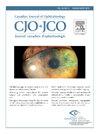ChatGPT 与视网膜疾病:关于人工智能对临床指南理解的横断面研究。
IF 2.8
4区 医学
Q1 OPHTHALMOLOGY
Canadian journal of ophthalmology. Journal canadien d'ophtalmologie
Pub Date : 2025-02-01
DOI:10.1016/j.jcjo.2024.06.001
引用次数: 0
摘要
目的:评估人工智能(AI)大型语言模型 ChatGPT(4.0 版)的性能:根据美国眼科学会(AAO)首选实践模式(PPP)指南,评估人工智能(AI)大型语言模型 ChatGPT(4.0 版)在常见视网膜疾病方面的性能:设计:采用横断面调查研究设计,将 ChatGPT 的回答与既定的临床指南进行比较:由三位玻璃体视网膜专家组成的小组对人工智能的回答进行了评估:为了调查 ChatGPT 对临床指南的理解能力,我们设计了 130 个问题,这些问题涵盖了 AAO PPP 的 12 个视网膜疾病领域中的广泛主题。由 3 位视网膜专家组成的小组根据回答的相关性、准确性以及是否符合 AAO PPP 指南,采用 1-5 级李克特量表对回答进行独立评估。回答的可读性采用 Flesch 可读性易读性和 Flesch-Kincaid 等级评分进行评估:结果:ChatGPT 的总体平均得分为 4.9/5.0,表明与 AAO PPP 指南高度一致。各领域的得分不尽相同,疾病的外科治疗得分最低。回复的阅读易读性得分较低,需要大学到研究生水平的理解能力。发现的错误与诊断标准、治疗方案和方法程序有关:结论:ChatGPT 4.0 在生成与指南一致的回复方面表现出了巨大的潜力,尤其是在常见的内科视网膜疾病方面。然而,它在手术视网膜方面的性能略有下降,这突出表明临床医生仍需不断输入信息、进一步完善模型并提高可理解性。本文章由计算机程序翻译,如有差异,请以英文原文为准。
ChatGPT and retinal disease: a cross-sectional study on AI comprehension of clinical guidelines
Objective
To evaluate the performance of an artificial intelligence (AI) large language model, ChatGPT (version 4.0), for common retinal diseases, in accordance with the American Academy of Ophthalmology (AAO) Preferred Practice Pattern (PPP) guidelines.
Design
A cross-sectional survey study design was employed to compare the responses made by ChatGPT to established clinical guidelines.
Participants
Responses by the AI were reviewed by a panel of three vitreoretinal specialists for evaluation.
Methods
To investigate ChatGPT's comprehension of clinical guidelines, we designed 130 questions covering a broad spectrum of topics within 12 AAO PPP domains of retinal disease These questions were crafted to encompass diagnostic criteria, treatment guidelines, and management strategies, including both medical and surgical aspects of retinal care. A panel of 3 retinal specialists independently evaluated responses on a Likert scale from 1 to 5 based on their relevance, accuracy, and adherence to AAO PPP guidelines. Response readability was evaluated using Flesch Readability Ease and Flesch-Kincaid grade level scores.
Results
ChatGPT achieved an overall average score of 4.9/5.0, suggesting high alignment with the AAO PPP guidelines. Scores varied across domains, with the lowest in the surgical management of disease. The responses had a low reading ease score and required a college-to-graduate level of comprehension. Identified errors were related to diagnostic criteria, treatment options, and methodological procedures.
Conclusion
ChatGPT 4.0 demonstrated significant potential in generating guideline-concordant responses, particularly for common medical retinal diseases. However, its performance slightly decreased in surgical retina, highlighting the ongoing need for clinician input, further model refinement, and improved comprehensibility.
Objectif
Évaluer les capacités d'un grand modèle de langage en intelligence artificielle (IA), soit ChatGPT (version 4.0), en ce qui a trait aux rétinopathies courantes, conformément aux lignes directrices en matière de pratiques courantes privilégiées (PPP, pour Preferred Practice Pattern®) de l'American Academy of Ophthalmology (AAO).
Nature
Il s'agit d'une enquête transversale visant à comparer les réponses du logiciel ChatGPT en fonction de lignes directrices cliniques établies.
Participants
Les réponses du logiciel d'IA ont été évaluées par un panel de 3 spécialistes de l'ophtalmologie vitréorétinienne.
Méthodes
Afin d'examiner le degré de compréhension du logiciel ChatGPT en matière de lignes directrices cliniques, nous avons mis au point 130 questions portant sur un vaste ensemble de sujets qui s'inscrivaient dans les 12 domaines de PPP de l'AAO en matière de rétinopathies. Ces questions ont été élaborées pour inclure des critères diagnostiques, des recommandations thérapeutiques et des stratégies de prise en charge, y compris des aspects médicaux et chirurgicaux en lien avec les rétinopathies. Un panel de 3 rétinologues indépendants ont évalué les réponses sur une échelle de Likert de 1 à 5 en fonction de leur pertinence, de leur exactitude et de leur respect des lignes directrices de PPP de l'AAO. On a eu recours au test de lisibilité de Flesch et au test de lisibilité selon le niveau scolaire de Flesch-Kincaid pour évaluer la lisibilité des réponses.
Résultats
Le logiciel ChatGPT a obtenu un score moyen global de 4,9/5,0, ce qui évoque une grande concordance avec les lignes directrices de PPP de l'AAO. Les scores fluctuaient en fonction des domaines, le score le plus faible portant sur la prise en charge chirurgicale. Le score de lisibilité des réponses était faible : elles exigeaient un niveau de compréhension de premier ou de deuxième cycle universitaire. Les erreurs identifiées portaient sur les critères diagnostiques, les options thérapeutiques et les démarches méthodologiques.
Conclusion
Le logiciel ChatGPT 4.0 a fait preuve d'un potentiel significatif pour ce qui est de générer des réponses qui respectent des lignes directrices, surtout en ce qui a trait aux rétinopathies courantes. Cependant, les résultats sont légèrement moindres dans le traitement chirurgical des rétinopathies, d'où l'importance de toujours disposer des compétences d'un clinicien, de parfaire davantage le modèle et d'en améliorer l'intelligibilité.
求助全文
通过发布文献求助,成功后即可免费获取论文全文。
去求助
来源期刊
CiteScore
3.20
自引率
4.80%
发文量
223
审稿时长
38 days
期刊介绍:
Official journal of the Canadian Ophthalmological Society.
The Canadian Journal of Ophthalmology (CJO) is the official journal of the Canadian Ophthalmological Society and is committed to timely publication of original, peer-reviewed ophthalmology and vision science articles.

 求助内容:
求助内容: 应助结果提醒方式:
应助结果提醒方式:


